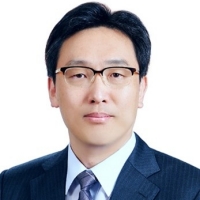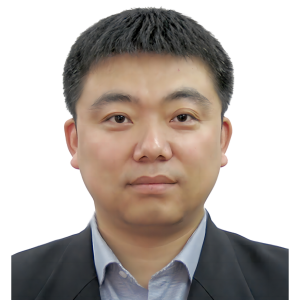ICMSET 2025 Invited Speakers
| Invited Speaker #1 | |
|---|---|
 Prof. Ildoo Chung, Pusan National University, Korea |
|
| Introduction |
Professor Ildoo Chung joined the Department of Polymer Science and Engineering at Pusan National University, Korea, in 2005. Prior to this, he conducted postdoctoral research in the Department of Chemistry at the University of Tennessee, USA, and the Department of Biomedical Engineering at the University of Alabama at Birmingham, USA. He earned his Ph.D. from Pusan National University in 2000.
He has served as the Editor-in-Chief of the Journal of Adhesion and Interface and as a member of the board of directors for the Polymer Society of Korea, the Korea Society of Adhesion and Interface, the Korea Polyurethane Society, and the Asian Cyclodextrin Conference. He has published over 130 peer-reviewed articles and delivered more than 220 presentations at national and international conferences. His research focuses on polymer synthesis methods such as atom transfer radical polymerization (ATRP) and reversible addition-fragmentation chain transfer (RAFT) polymerization, with applications in advanced polymeric biomaterials. These include drug delivery systems, polymers compatible with hard and soft tissues for dental and orthopedic applications, photocurable 3D-printable polymeric biomaterials, biodegradable polymers, and composite systems. |
| Speech Title | Biodegradable and thermoresponsive hollow porous micro/nanoparticles for sustained drug release |
| Abstract | Various types of porous biodegradable polymers based on polycaprolactone (PCL), polylactide (PLA), and polyurethane were synthesized and used as drug delivery vehicles for bupivacaine and carboplatin. Porous biodegradable microspheres were fabricated by successful RAFT polymerization of methyl vinyl ketone (MVK) onto PCL and PLA, which was first synthesized by ring opening polymerization of lactide followed by an oil/water emulsion-evaporation method, then finally photodegradation of PMVK blocks by UV irradiation. Biodegradable porous polyurethane nanoparticles have also been fabricated using water-in-oil-in-water double emulsion and solvent evaporation methods. These nanoparticles are composed of biodegradable and biocompatible polyfumarateurethane (PFU) and L-threonine polyurethane (LTHU), designed for degradation through hydrolysis and enzymatic activity, facilitated by the presence of ester bonds and peptide bonds within the polymer backbone. The morphology of microspheres was spherical with smooth surfaces before UV irradiation. Microspheres fabricated only from PCL homopolymers could also retain their smooth surface after UV irradiation. However, those from PCL-PMVK and PCL-PLA-PMVK block copolymers had rough surfaces and porous structures after UV irradiation due to the photodegradation of PMVK blocks as a porous template. The porosity and shape of the microspheres and shape of microspheres were dependent on the PMVK contents and size of microspheres. In addition, the drug loading, encapsulation efficiency, and drug release profiles, using UV-Vis spectroscopy, showed the highest encapsulation efficiency with 2.5% drug, and sustained release profile. |
| Invited Speaker #2 | |
|---|---|
 Prof. Junlei Qi, Harbin Institute of Technology, China |
|
| Introduction |
Qi Junlei, born in 1982, male, is a Professor and Doctoral Supervisor with a Ph.D. in Engineering. He currently serves as the Deputy Director of the State Key Laboratory of Precision Welding and Joining of Materials and Structures at Harbin Institute of Technology. He has been recognized as a Distinguished Young Scholar by the Ministry of Education, a High-Level Talent in Heilongjiang Province, a recipient of the Excellent Youth Fund of Heilongjiang Province, and an Academic Leader of the Young Scientist Studio at Harbin Institute of Technology.
His research primarily focuses on the fundamental theories and applications of joining advanced materials and dissimilar materials. He has led more than 30 research projects, including the National Natural Science Foundation of China (NSFC) Young Scientists Fund, General Program, and Key Program of the Equipment Development Foundation. Additionally, he has played a key role in many key projects in aerospace and military industries. He has published over 200 papers in prominent academic journals, including more than 170 SCI-indexed papers with over 9,000 citations and an H-index of 51. Among these, more than 130 papers were published as first or corresponding author, including over 50 papers with an impact factor (IF) greater than 10, six cover papers, and more than 20 ESI Hot or Highly Cited Papers. As the first inventor, he has filed 53 Chinese invention patents, with 33 already authorized, and three technological achievements have been transferred for application. His research findings have been applied in the manufacturing of key products in aerospace, nuclear power, and new energy sectors, including aerospace engine, thermal barrier coatings, aerospace antenna covers, nuclear electrical equipment, and composite current collectors. |
| Speech Title | New Methods for Joining Advanced and Dissimilar Materials |
| Abstract | Ceramic/ceramic-based materials are widely used in the processing and manufacturing of various structural and functional components in aerospace, electronic communication and other fields due to their excellent properties such as light weight, high strength, high temperature resistance and oxidation resistance. Due to the high hardness and brittleness of ceramic materials, as well as their poor machinability, in practical applications, they need to be brazed and connected with themselves or heterogeneous metals to achieve the manufacturing of components with complex geometric structures. However, ceramic-based material welding is confronted with bottleneck problems such as poor surface compatibility, complex interfacial reactions prone to the formation of brittle compounds, and large residual stress during welding, which makes the interface prone to cracking. In response to the above issues, the presenter and his team have made progress in recent years in advanced intermediate layer design, surface structure regulation, and the development of non-equilibrium welding technology, achieving the welding connection of various new materials such as ceramics, ceramic-based composites, and graphene/carbon nanotubes with themselves or heterogeneous metals. The key research focuses on breakthroughs in interface reaction regulation, interface structure regulation, property gradient transition, residual stress relief, and the application of wave transmission/thermal dissipation functions, providing crucial technical support for the manufacturing of ceramic-based material connection components. |
